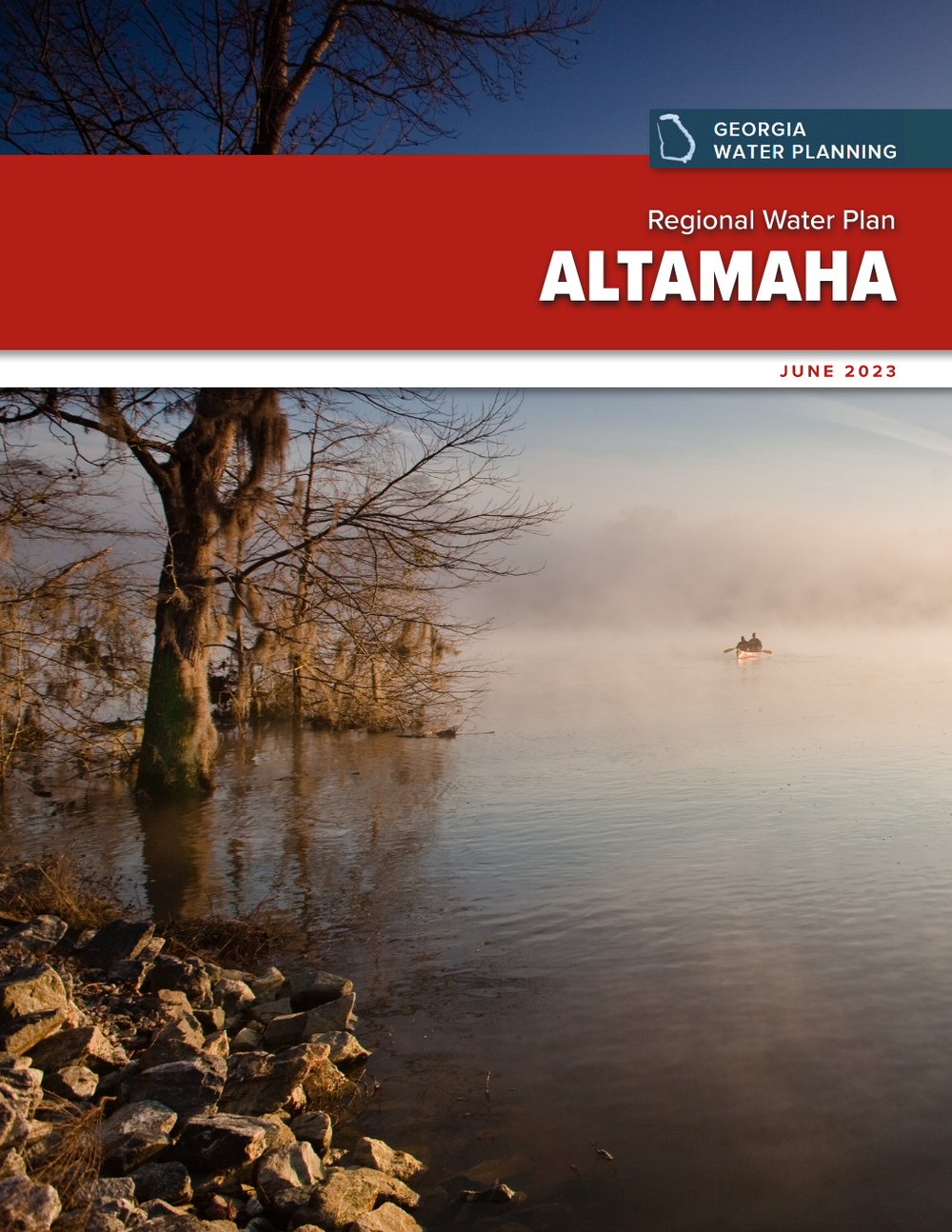
Altamaha Regional Water Plan
The Altamaha Regional Water Plan was initially completed in 2011 and subsequently updated in 2017 and 2023. The plan outlines near-term and long-term strategies to meet water needs through 2060.
Background
The Altamaha Region includes 16 counties in the south-central portion of Georgia. Over the next 40 years, the population of the region is projected to increase from approximately 251,500 to 252,600 residents. Key economic drivers in the region include agriculture, forestry, professional and business services, education, healthcare, manufacturing, public administration, fishing and hunting, and construction. Energy production is also significant to the region. Water supplies, wastewater treatment, and related infrastructure will need to be developed and maintained to support these economic drivers.

Groundwater (the majority from the Floridan aquifer) is forecasted to meet about 62% of the water supply needs in 2060, with agricultural and industrial uses being the dominant demand sectors. Surface water is expected to be utilized to meet about 38% of the 2060 water supply needs, with agriculture and energy as the dominant demand sectors. The energy sector is a major user of surface water from the Altamaha River.
Water resource challenges in the region include: surface water challenges during drier years/drought periods; and water quality challenges associated with low dissolved oxygen in some portions of the region.
Management practices are needed to address these challenges including: water conservation; refining planning information; alternate sources of supply in areas where surface water availability may be limited; improving/upgrading wastewater treatment; and addressing non-point sources of pollution.
Related Files: